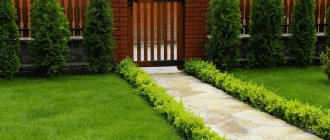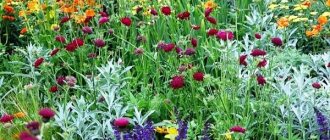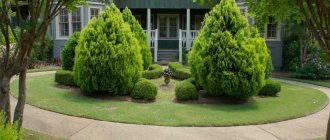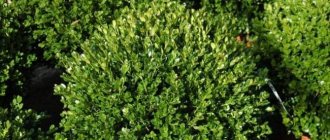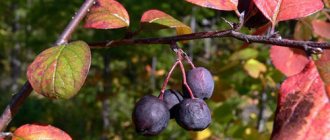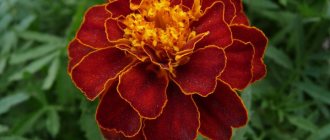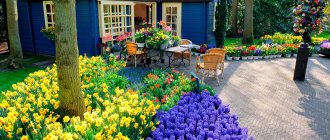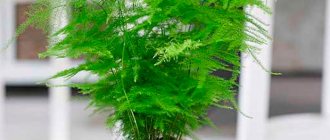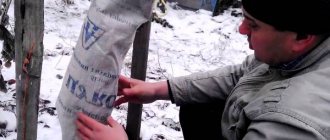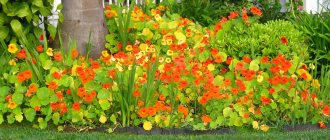Luxurious flower beds, original rock gardens, picturesque ponds, cozy gazebos would never have looked so attractive if it were not for the background that unites all these decorative finds - a smooth, thick, silky lawn. By itself, without additional solutions, it becomes an excellent decoration for a summer cottage. You just need to properly organize your lawn care. We invite you to understand what care procedures exist and how to do them correctly.
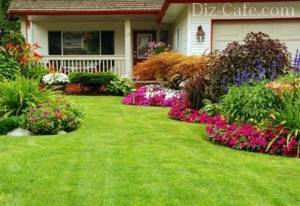
A beautiful, well-groomed lawn in front of the house or in the backyard is as important a part of landscape design as a flower garden or garden.
Caring for a carpet of lush green grass is necessary at any time of the year. Even during the winter, you should be attentive to the lawn hidden under the snow: it is advisable not to walk on it, not to make a skating rink and not to clutter it with snowdrifts while cleaning the paths. Only a regular integrated approach can transform wild grass thickets into a noble, soft, beautiful lawn. So, let's look at a number of mandatory measures for caring for the lawn in front of the house.
- 2 Aeration – creating comfort for the roots
- 3 Fertilizing - choosing fertilizers
- 4 Mulching – increasing the fertile layer
- 5 Mowing – making the lawn smooth
- 6 Watering - we arrange irrigation
Combing - removing felt
To free the lawn from debris that has accumulated over a long time, to remove the matted felt layer from the surface of the soil, lawn combing is used. The presence of felt is an excellent opportunity for the development of pathogens and the proliferation of insect pests.
A simple and effective tool for combing is a medium-hard fan rake. Garbage and felt are raked into piles, then taken out or carried away on a garden wheelbarrow. The combing procedure involves repeated longitudinal and transverse processing of the lawn, so this type of work is considered labor-intensive.
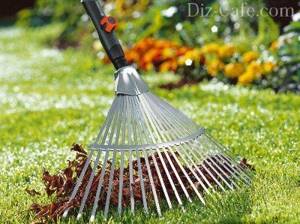
Fan rakes, unlike conventional ones, allow you to collect garbage more thoroughly, while at the same time carefully, without damaging the shoots
Works by month
The calendar is indicative, compiled for the Moscow region. In other regions of the middle zone, in the Urals, in Siberia, the dates are shifted depending on weather conditions.
In March, inventory will be requisitioned. If by the end of the month the snow melts and the ground dries out, you can begin to inspect the area. You will need to prepare everything you need, it will become clear whether you will need seeds or a lawn roll for restoration, or whether rolling is needed.
April – start of work: combing, loosening. Reseed the lawn if there are bald spots. Aerate. Carry out the first feeding.
May is the time for the first haircut, second feeding, fighting dandelions, they become visible. If it's hot, frequent watering is needed.
The most favorable days for carrying out lawn work are in the spring of 2020. Focus on your region:
February : 8, 26 (lawn cleaning), 28, 29 (additional seeding);
March : 5-7 (cleaning, reseeding, aeration, fertilizing), 18 (weeding), 20 (garbage collection, processing), 25 (weed control), 30 (mowing);
April : 3 (additional seeding, aeration), 6 (sowing, watering, if necessary), 8 (cleaning, cutting), 17 (pest and disease control, weeds), 22 (treatment against pests and diseases), 26 (haircut) , 30 (harvesting, overseeding);
May : 3 (sowing, watering if necessary), 7 (mowing only), 17 (mowing, fertilizing), 21 (mowing, reseeding), 22 (weeding), 24 (mowing, pest and disease control, weeds) , 27 (haircut), May 30 (additional sowing, watering, if necessary).
You can water any day as needed.
The rules for spring lawn care are simple. You definitely need to make time for them in your busy schedule. If everything is not done in a timely manner, the condition of the lawn will noticeably deteriorate.
Aeration – creating comfort for the roots
To carry out aeration, it is enough to make punctures in the turf layer so that the air freely reaches the roots. Ventilating the underground part of plants feeds the roots with oxygen and prevents water and air from stagnating. Moderate circulation of air masses prevents the occurrence of fungal diseases and rot.
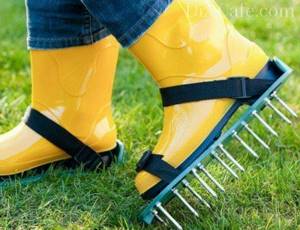
To combine the process of lawn aeration with a healthy walk in the fresh air, original devices worn on shoes - aerator sandals - will help
Lawn aeration is usually done in the fall or spring, but never in the summer, when too high temperatures can cause drought. Before cutting the turf, you should water the lawn thoroughly for two days in a row. The puncture depth is from 8 to 10 cm.
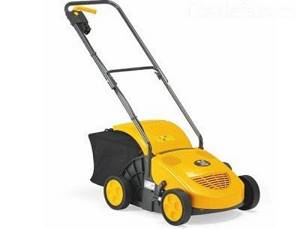
The most common aerators are powered by a gasoline engine or mains power. Average power – 1400-1600 W, working width – 30-40 cm
The traditional tool for aeration is an ordinary fork. If the lawn is small in area, then they will be quite enough. When an area covered with grass takes up a lot of space, a special device is required - an aerator. There are several types of aerators, differing in technical characteristics and purpose. For example, a series of aerators serves for parallel formation of the root system.

A distinction should be made between piercing and pinching during aeration. Piercing is a deeper process: suppose the pitchfork penetrates to a depth of 8-10 cm
Along with aeration, they perform verticulation - they cut off unnecessary shoots and excess stems with a special apparatus equipped with a knife mechanism. A good time for this event is the end of spring and the beginning of autumn. Immediately after verticulation, seasonally appropriate fertilizers are applied.
Recent Entries
5 working ways to use tar in the garden 7 indoor plants that help you get married even in adulthood Indoor plants that can bloom in trouble
Watering
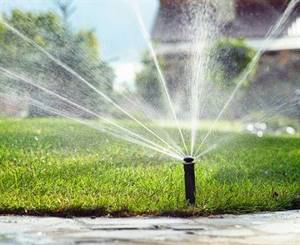
Irrigation of a young lawn is carried out using sprinklers. When the grass is sufficiently rooted and has turned the soil surface into dense turf, you can apply water in a stream.
Water abundantly, but rarely, so that the area has time to dry out. Otherwise, fungal diseases develop. In spring, it is enough to water the lawn 1-2 times a week. With the arrival of summer heat and drought, the frequency increases.
The irrigation rate is selected so that the soil is moistened to a depth of 15-20 cm. The best time for irrigation work is morning.
Daytime watering has two disadvantages:
- drops of water on the leaves of herbs, which are lenses, collect the sun's rays falling on them to a point, so that the plant gets burned;
- a significant portion of the water evaporates.
After evening watering, the grass will remain wet almost all night, which will lead to the development of fungal diseases. At normal times, it is allowed to resort to irrigation no later than 16-00 - then the grass will have time to dry out before nightfall. Later evening watering is allowed only during periods of extreme heat.
Fertilizing - choosing fertilizers
Regular cutting, combing and removing natural debris from the grass carpet leads to the fact that the fertile layer becomes poor and the grass becomes frail and faded. Artificial fertilizing will help replace substances lost from the soil. Experts recommend fertilizing every six weeks, and autumn compositions differ from spring ones.
Fertilizers for spring fertilizing are enriched with nitrogen, which plants need for vigorous germination and growth of leaf blades. Potassium and phosphorus give proper development of roots and strength to shoots. Autumn fertilizing is characterized by a low nitrogen content, since at this time of year grass growth stops; potassium, on the contrary, predominates.

To fertilize lawns, you should purchase a special fertilizer. The best option is universal, packaged in 3 kg bags. The price of one package is approximately 120 rubles
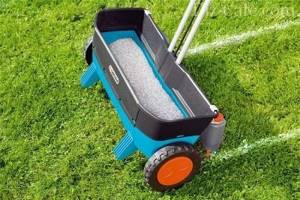
Using a fertilizer spreader makes the fertilizing process easier. This model distributes the substance on both sides, the main thing is not to exceed the concentration of the mixture
Fertilizers are applied in different ways:
- through an irrigation system (or using a watering can), having previously made an enriched solution;
- using a seeder - automatic spreader;
- manually, evenly distributing it over all areas of the lawn.
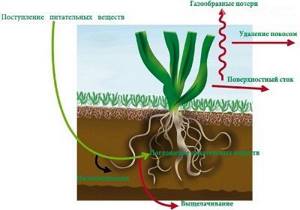
The diagram clearly shows how fertilizing and removal of fertilizers occur, which do not stay in the soil for a long time. That is why the introduction of nutrients into the soil should be regular.
Mulching - increasing the fertile layer
September and October are suitable months for mulching. It consists in increasing the fertile layer due to the added mixture that is beneficial for plants. Typically, organic material consists of three components: peat, loam and sand. The ratio of parts depends on the type of soil:
- Sandy – 2:4:1.
- Clay – 1:2:4.
- Loamy – 1:4:2.

For mulching, a nutrient mixture is prepared, one part of which is peat. Low-lying peat is especially useful for improving soil structure.
Regular mulching enriches the turf with nutrients, regulates the air-water regime, and makes the surface of the grass carpet even.
Mowing - making the lawn smooth
The main purpose of lawn mowing is to give it an aesthetically attractive, even flawless look. Grass cutting is carried out throughout the grass growth cycle, that is, from spring to autumn.
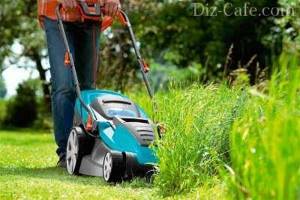
Cutting grass with a lawn mower is not just a lawn maintenance process, but a way of life. You get used to this activity just like morning jogging or walking the dog.
A few rules will help make the process more efficient:
- Frequent and too short pruning threatens to weaken the shoots, as they begin to lack nutrients and moisture.
- Before cutting, the grass is straightened (for example, with a rake), and after cutting, it is immediately removed so as not to disrupt the aeration process.
- It is not recommended to mow a wet lawn - the grass sticks to the parts of the lawn mower. It is better to choose a dry, sunny day. It is especially dangerous to use electrical equipment on a rainy day.
- Read the instructions that came with your lawn mower; they will tell you how to properly cut the grass and clean the machine.
- Mowing is carried out in different directions so that the lawn is uniform.
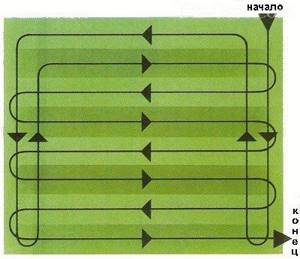
Approximate movement diagram of a lawn mower. Alternately moving in different directions, you must try to cover the entire area of the lawn, otherwise you will not achieve a flat surface
What to do with your lawn after winter: preparing for spring
In early spring, care should be taken to ensure that no puddles form on the lawn. To do this, you need to evenly distribute the snow over the lawn.
The most effective way is to ensure high-quality drainage at the stage of laying the lawn.
Note! Work such as watering, fertilizing and aerating the lawn should begin when the risk of frost disappears - in late March or early April.
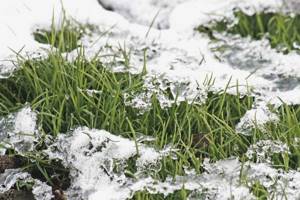
What to do with the lawn after winter.
And if, after the snow has melted, you find unsightly bald spots on your lawn, then you should start restoring them.
It is necessary to apply lawn bait and sow damaged areas with grass.

Bald spots on the lawn.
Winter is the quietest time for the lawn. During this period it is better not to disturb him. In the spring, after the onset of stable warmth, it is necessary to begin active work.

